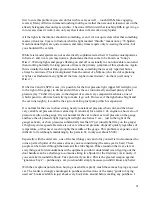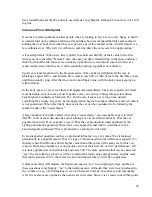
14
is today. Oil crises, an increased awareness of safety, a growing environmentalist movement, and
an activist mood in the government and the general populace of the US combined in such a way
that many people saw cars as little more than toxin-spewing deathtraps built to create profits used
solely to line the pockets of automotive executives.
There seemed at that time a very real possibility that the US government would ban convertibles
altogether (indeed, this was a contributing factor to the US auto makers
“
decision to voluntarily
cease producing convertibles at that time). It is possible that Alfa decided in 1975 (when the
Alfetta coupe, the first of the 116-based cars was introduced) that, since the lion
“
s share of
Spiders was going to the US, it would be much more risky financially to create an entirely new
automobile, since their main market might be completely shut down at any time, and instead
chose to go with a proven design. By the time convertibles began to come back in the early
…
80s,
financial constraints at the company prevented a new car from being developed. Besides, since
the 115 Spider lacked any real competition in its marketing niche (the Elan went out of
production in 1973), it sold quite well anyway.
An alternative hypothesis is that the Spider just wasn
“
t all that important to Alfa. When one looks
at the raw production numbers of any model year, spider sales were dwarfed by sedan sales, and
the coupes outsold them by orders of magnitude as well. The line of thinking could have been,
”
the Spider keeps people coming to the showrooms, so why not just leave it alone?
„
Of course,
such a hypothesis does not explain why Alfa went to such considerable trouble to keep the Spider
legal in the US, and update its styling periodically with changes that required substantial
retooling. These were not cheap modifications.
At any rate, the Spider stayed. Because convertibles were coming back into style, there are
actually quite a few comparative road tests in the literature using the Series 3 cars. They were
always praised for their road handling, styling, and (at the dawn of the dreaded cable linkage)
silky smooth shifters, but were always criticized for the flex of the chassis (a trait which all Alfa
Spiders share to one degree or another), the lack of power, and somewhat bizarre interior layout.
However, it is apparent that the character of the cars always shined through, because when the
votes were tallied the Spiders always came in the top 3rd, if hardly ever #1 (indeed, as I recall,
the automotive journalists of the time, in their infinite humility, always seemed quite surprised
that they liked the cars so very much, seeing as how
”
primitive
„
they were).
In 1986 the dual-pod dash was retired in favor of a large "monopod" or "single pod" dash that not
only incorporated the tach and speedometer, but also oil pressure, temperature, and fuel gauges.
The holes above the center console where these gauges once resided were not deleted but instead
became air conditioning ducts. Indeed, the dash itself never changed after 1970, and, aside from
color, is interchangeable with any model year, after 1970, with very few modifications.
Performance gradually increased from its all-time low of 1981. Alfa kept refining and tuning the
engine as much as possible to get power, economy, and emissions control. To this end, in 1980
Alfa incorporated variable valve timing (or VVT). The system is essentially an electromechanical
piston on the intake camshaft. Developed in the 1970s by Ing Giampaolo Garcea for Alfa, it was















































